
An Acute Toxicity in Human Health of Raw and Cooked Vegetable in Tomato and Spinach
*Corresponding Author(s):
Sunita MishraDepartment Of Food Science And Nutrition, School For Home Sciences, Babasaheb Bhimrao Ambedkar University, A Central University, Lucknow, Uttar Pradesh, India
Tel:+91 9415228811,
Email:sunitabbau@gmail.com
Abstract
Modern world adopting the new and fast techniques of agriculture methods for the maximum number of the production. The present study is based on an acute toxicity in human health of raw and cooked “Tomato” and “Spinach”. The Plant toxins are commonly the metabolites produce through plants to protect themselves against different threats like insects, predators and microorganisms. These toxins found in food plants are due to natural or new reproduction methods which enhance defensive mechanism. Natural toxins are present in numerous types of plants and these are ingested as food and when consumed in large quantity and not cook properly leads to food poisoning. These toxic substances when ingested can be potentially harmful to human health. The changing gases of atmosphere at different level of temperature caused spoilage in Tomato and Spinach and these products eaten by human caused food poisoning. These toxic substance are dangerous which lead ingested can be potentially harmful to human health.
Keywords
Tomato, Spinach and Toxicity in Human health
INTRODUCTION
Tomato (raw)
Tomato (Solanum lycopersicum) Tomato (Lycopersicon esculentum) belongs to the genus Lycopersicon under Solanaceae family. Tomato is a herbaceous sprawling plant growing to 1-3 m in height with weak woody stem. The flowers are yellow in colour and the fruits of cultivated varieties vary in size from cherry tomatoes, about 1-2 cm in size to beefsteak tomatoes, about 10 cm or more in diameter.
Tomatoes grow best when the daytime temperature is between 65 and 85 degrees Fahrenheit. They stop growing above 95 degrees Fahrenheit.
Tomatoes are the major dietary source of the antioxidant lycopene, which has been linked to many health benefits, including reduced risk of heart disease and cancer. They are also a great source of vitamin C, potassium, folate and vitamin K. The water content of tomatoes is around 95%. The other 5% consists mainly of carbohydrates and fiber. Tomatoes are rich in carotenoids, which are basically the phytochemicals that protect plants against sun rays which further induce free radicals.
Raw tomato are consume hardly 1 to 5 days in normal condition which are eaten by human. After 5 days raw tomato are going to decay which are harmful to human beings.
Solanines and chaconine natural toxin in tomato. Raw tomato are very harmful during heavy eaten causes acidity, burning of chest and seed of tomato are not properly digested and caused renal stone in kidney.
Tomato (cooked)
Tomato are boiled are called cooked tomato. During boil of tomato vitamin c are destroyed. There peel are very smooth and easy to press and make scope for improve the immunity. A good source of lycopene, the phytochemical which makes them red but which also has significant antioxidant properties.
The cooked tomato are easily decay and smell within 8 to 12 hours in normal condition and its does not suitable to eat due to microbial growth.
Decay cooked tomato to eat by human and its caused food poising and some symptom indicate such as nausea, vomiting, stomach pain, acidity etc.
Spinach (raw)
Spinach (Spinacia oleracea) is a leafy green flowering plant native to central and western Asia. It is of the order Caryophyllales, family Amaranthaceae, subfamily Chenopodioideae. It is an annual plant (rarely biennial), growing as tall as 30 cm (1 ft). Spinach may overwinter in temperate regions. Raw spinach is great in salads and sandwiches.
Spinach is rich in vitamins A, C and K, magnesium, iron and manganese.
Vegetarian Times writes that folate, vitamin C, niacin, riboflavin and potassium are more available in raw spinach when it is eaten raw is a cool weather crop that grows best when daytime temperature remain consistently below 75°F-commonly in spring or fall.
The spinach are consume 4 to 6 day in normal condition after that they fade and the color of leaf starts falling and the are not to be used for eating such as salad etc.
Consume too much and you may be in for unpleasant symptoms such as kidney stones, abdominal pain, low blood pressure, tremors or convulsions, vomiting and weak pulse.
Spinach (cooked)
The water of spinach are formed during boiling is very useful for body which contain vitamin e and folic acid which are improve to maintaining the body skin and sexual hormones.
After cooked spinach are consumed 7 to 12 hour for eating and after that these are not suitable to eat due to microbial attack and spinach are bitter in taste while white in color.
Classification of plant toxin
Alkaloids: Some of the organic compounds containing nitrogen in heterocyclic ring, basic in nature and from amino acid, most of which exhibit strong physiological activity. The glycoalkaloid toxicity is its acute toxicity which causes of human poisoning due to the ingestion of greened damage or sprouted potatoes as a consequence of high level of glycoalkaloid that is solanine.
Solanines and chaconine: The family of solanacea plant such as tomato, potato, eggplant contain natural toxin called solanines and chaconine which are glycoalkoids. This causes bitter tasting in potato and green parts of as well as green tomato.
Mushroom toxins: Wild mushrooms may contain several toxins such as muscimol and muscarine, which can cause diarrhea, vomiting, confusion visual disturbances and hallucinations. Onset of symptoms occurs 6-24 hours or more after ingestion of mushroom.
Toxicological effect of plant toxins
Phyto allergy: Common case of Phyto allergy are timothy grass, birch, hazel caused Hay fever due to pollen. The eating of strawberries and allergy to peanuts resulting Urticarial and some other recognized allergy condition due to phytoconstituents.
Food poisoning: Food poisoning caused by plant toxin due to consumption of food such as partially cooked, some cultivars of tomato and potato and ingestion of herbs selected from the wild not desire for human use such as poisonous berries and mushroom.
MATERIALS AND METHODS
The present study will be experimental research design. This will be conducted in Nutritional Laboratory of department of Food science and Technology, school for Home science, BBAU, Lucknow for a period of July 2018 to may 2019. The nutritional analysis will be conducted in analysis laboratory of RFRAC (Regional Food Research and Analysis Center) situated in Lucknow.
Sample
The required sample for the experiment is raw and cooked vegetable tomato 1pices (20) gram, and spinach (200 gm) [1-10].
Study design
The flow charts of the study design were as follows.
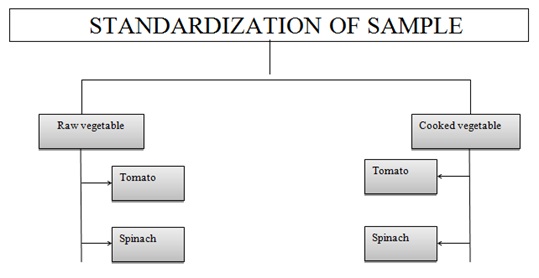 Raw tomato
Raw tomato
The observation of raw tomato 1 day, 7 days and 14 days at room temperature (Figures 1-3)
1st day
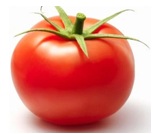 Figure: Tomato.
Figure: Tomato.
1st day of observation of tomato
• The tomato are looking Fresh and healthy.
• The tomato are eatable by human.
• The texture of tomato is round and fresh.
• Aroma smell like a freshly juicy tomato
7th day
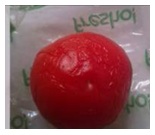 Figure 2: Tomato.
Figure 2: Tomato.
7th day of observation of tomato
• they started wrinkling within 7 days and became soft and wrinkled all around within a 14 days
• It is a not eatable by human.
• Aroma smell are bad like sour.
• This is because, besides antimicrobial activity, the composite also allows the appropriate exchange of gases and moisture.
14th day
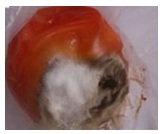 Figure 3: Spoilage Tomato.
Figure 3: Spoilage Tomato.
14th day of observation of tomato
• The problem here is that this exchange also leads to the building up of microbial activity which contributes to the spoilage of the vegetables. Which is where the silver nanoparticles come in.
• Silver nanoparticles can promote good antimicrobial activity, but the nanoparticle colloids tend to form aggregates and hinder the process of the antimicrobial activity.
• It's have more toxicity and its texture is totally bad.
• Aroma smell is totally bad and contain toxin water from it.
Cooked tomato
The observation of cooked tomato in hours 7 hours, 24 hours (1day) and 48 hours (2 days) at room temperature (Figures 4-6)
7 hours
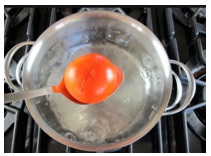 Figure 4: Boiled Tomato.
Figure 4: Boiled Tomato.
The observation of tomato within 7 hours
• Cooked tomato are looking fresh but in loose in structure.
• During cooked vitamin c are destroyed within tomato.
• Eatable by human.
• Aroma smell like little sweet and little sour in taste.
24 hours
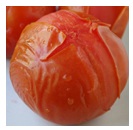 Figure 5: Tomato.
Figure 5: Tomato.
The observation of tomato within 24 hours
• The peel of cooked tomato released from it.
• Start growing of microbial attack.
• Bad and bitter in taste.
• Aroma smell is bad before decay.
48 hours
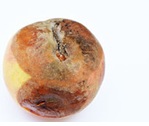 Figure 6: Tomato.
Figure 6: Tomato.
The observation of tomato within 48 hours
• The peel contain mold which are appearance in white in color.
• Microbial growth are very fast.
• No taste due to decay.
• Aroma smell is totally bad and decay started.
Raw spinach
The observation of raw spinach 1 day, 7 days and 14 days at room temperature (Figure 7-9).
1st day
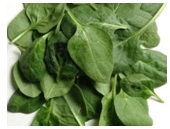 Figure 7: Spinach.
Figure 7: Spinach.
1st day of observation of spinach
• Spinach are looking fresh and green in color.
• It has more nutrients and eatable by human.
• No toxin present after washing the spinach leaf.
7th day
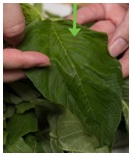 Figure 8: Spinach.
Figure 8: Spinach.
7th days of observation of spinach
• The leaf of spinach going to wither.
• Dehydrate of water from leaf of spinach.
• Turning green to blue in color.
14th day
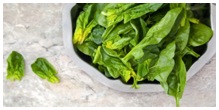 Figure 9: Spinach.
Figure 9: Spinach.
14th days of observation of spinach
• The leaf are shrink.
• Leaf of all water are dehydrated.
• Totally turn into blue with yellow in color.
Cooked spinach
The observation of cooked spinach in hours 7 hours, 24 hours (1day) and 48 hours (2 days) at room temperature (Figure 10-12).
7 hours
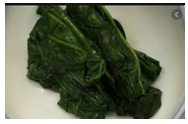 Figure 10: Spinach.
Figure 10: Spinach.
7 hours of observation of spinach
• Cooked spinach are looking fresh and good in taste.
• Cooked spinach are dark green in color and more nutritious.
• Aroma smell are good.
24 hours
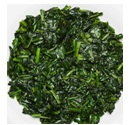 Figure 11: Spinach.
Figure 11: Spinach.
24 hours of observation of spinach
• Texture of spinach are going to bad.
• Realizing wasted water which are harmful to us.
• Aroma smell are bad just like decay.
48 hours
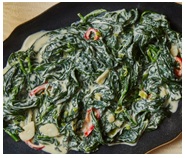 Figure 12: Spinach.
Figure 12: Spinach.
48 hours of observation of spinach
• Texture of spinach are totally bad.
• More wasted water realized and decay.
• Aroma smell are totally bad causing vomiting by human.
RESULTS AND DISCUSSION
The compression between raw and cooked, tomato and spinach based on toxicity, enzyme activation, growth microbial organism and healthy fresh to eaten by human (Figures 13 and 14).
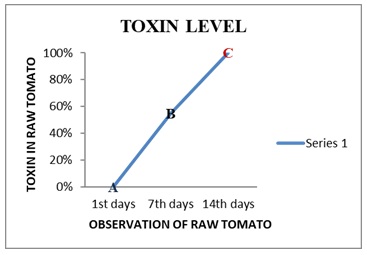 Figure 13: The graphical representation of raw tomato.
Figure 13: The graphical representation of raw tomato.
• A phase has a positive acceleration there is no activation of any enzymes and fresh to eatable, more in nutritious, and no harmful effect in human health.
• B phase its has an exponential phase of increasing toxin level which cause number of disease.
• C phase This phase of negative acceleration and number of microorganism grow which damage the nutrition property of tomato and the tomato is completely spoiled. If it will consumed by human it will be dangerous for their health.
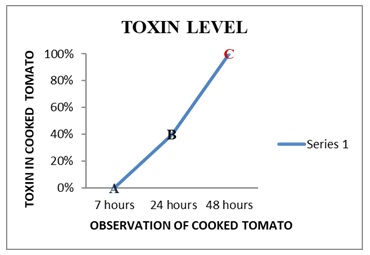 Figure 14: The graphical representation of cooked tomato.
Figure 14: The graphical representation of cooked tomato.
• A phase has a positive acceleration there is no activation of any enzymes and fresh to eatable, more in nutritious, and no harmful effect in human health.
• B phase has indicate the toxic level are going to increases. The cooked tomato are spoilage approx more the 40%. Which cause disease such as food poisoning.
• C phase This phase of cooked tomato looking very bad and smell like decay which cause nausea vomiting and number of microorganism grow which damage the nutrition property of tomato and the tomato is completely spoiled. If it will consumed by human it will be dangerous for their health.
The micro toxin found in tomato is mold which spoiled and effects of human health (Figures 15 and 16).
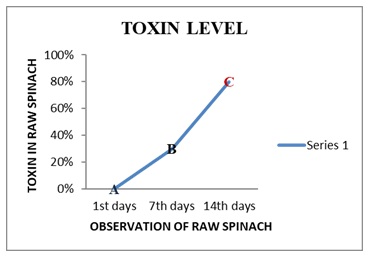 Figure 15: The graphical representation of raw spinach.
Figure 15: The graphical representation of raw spinach.
• A phase Looking good in texture, color and taste. More nutritious which are fulfilled with essential element iron calcium and vitamin k to protect disease.
• B phase has indicated the toxic level are going to increases. The raw spinach are spoilage approx more the 30% in 7th days. Color of spinach fade and wrinkle.
• C phase This phase of spinach looking very bad and smell like decay which cause nausea vomiting and number of microorganism grow which damage the nutrition property of spinach and the spinach is completely spoiled. If it will consumed by human it will be dangerous for their health like ulcer constipation food poisoning.
The micro toxin found in spinach is fungi which spoiled and effects of human health.
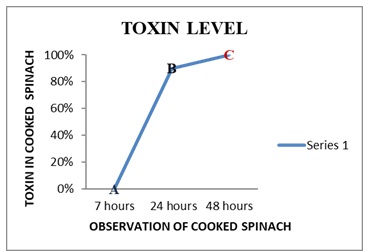 Figure 16: The graphical representation of cooked spinach.
Figure 16: The graphical representation of cooked spinach.
• A phase Looking good in texture, color and taste 0% microbial attack till 7 hours. More nutritious which are fulfilled with essential element iron calcium and vitamin k to protect disease.
• B phase the toxicity level are increased to rich 90% which are almost decay within 24 hours and activation of enzyme, growth of microbes on its and nutritional value are destroyed.
• C phase This phase of cooked spinach looking very bad in texture and 100% decay within 48 hours.
Which cause nausea vomiting due to very bad smell and number of microorganism grow which damage the nutrition property of cooked spinach and the cooked spinach is completely spoiled. If it will consumed by human it will be dangerous for their health.
The micro toxin found in cooked spinach is fungi Early blight which caused spoiled and effects of human health.
CONCLUSION
Plant toxins are found widely in edible plants; apart from harmful effect, these also have nutritious and beneficial to health. These substances may be alkaloid, glycoside, proteins, tannins. These toxins are problem in correlation with different diseases and they may be a risk as bioterror weapons. Still, it serves as superb tools to study cellular and other mechanisms and enhanced knowledge about the plant toxins may give us new products for use.
ACKNOWLEDGEMENT
I would like to extend great appreciation to my supervisor Professor Sunita Mishra, Dean of department Food Science & Technology for her valuable and constructive suggestions during the planning and development of this research work.
Thanks to my parents who supported me lot while completing this research.
REFERENCES
- Roychowdhury T (2008) Impact of sedimentary arsenic through irrigated groundwater on soil, plant, crops and human continuum from Bengal delta: special reference to raw and cooked rice. Food and chemical toxicology 46: 2856-2864.
- Ruprich J, Rehurkova I, Boon PE, Svensson K, Moussavian S, et al. (2009) Probabilistic modeling of exposure doses and implications for health risk characterization: Glycoalkaloids from potatoes. Food and chemical toxicology 47: 2899-2905.
- Ostrý V, Ruprich J, Skarkova J (2010) Glycoalkaloids in potato tubers: The effect of peeling and cooking in salted water. Acta alimentaria 39: 130-135.
- Omayio DG, Abong GO, Okoth MW (2016) A review of occurrence of glycoalkaloids in potato and potato products. Current Research in Nutrition and Food Science 4: 195-202.
- Matulka RA, Hood AM, Griffiths JC (2004) Safety evaluation of a natural tomato oleoresin extract derived from food-processing tomatoes. Regul Toxicol Pharmacol 2039: 390-402.
- Kun Y, Ssonko Lule U, Xiao-Lin D (2006) Lycopene: Its properties and relationship to human health. Food Reviews International 22: 309-333.
- Terminiello L, Patriarca A, Pose G, Pinto VF (2006) Occurrence of alternariol, alternariol monomethyl ether and tenuazonic acid in Argentinean tomato puree. Mycotoxin Res 22: 236-240.
- Hasan HAH (1995) Alternaria mycotoxins in black rot lesion of tomato fruit: conditions and regulation of their production. Mycopathologia 130: 171-177.
- Lomnitski L, Bergman M, Nyska A, Ben-Shaul V, Grossman S (2003) Composition, efficacy and safety of spinach extracts. Nutr cancer 46: 222-231.
Citation: Sharma D, Mishra S (2020) An Acute Toxicity in Human Health of Raw and Cooked Vegetable in Tomato and Spinach. J Food Sci Nutr 6: 075.
Copyright: © 2020 Darshan Sharma, et al. This is an open-access article distributed under the terms of the Creative Commons Attribution License, which permits unrestricted use, distribution, and reproduction in any medium, provided the original author and source are credited.

